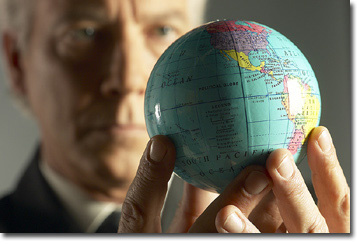Calculating for Culture in Global Branding
Medical Pharmaceutical Translations • Apr 1, 2013 12:00:00 AM

Creating a Global Brand involves uniquely communicating a powerful message to a variety of audiences across languages, geography, religion and traditions. With no single language linking us all since the Tower of Babel, the trick, and the duty, is to get the message right.
Global Branding is a conscious and ever changing process to reach target audiences. Language is a key part of any global communication but not all communication is verbal. As humans, we receive more sensory cues than we are able to process when we communicate. Culture provides us with a way to filter out what’s unimportant.
The amount of language desired varies widely and depends on the culture. Low Context cultures prefer direct, verbal communication while High Context cultures place less emphasis on verbiage. How people use space and time, learn, communicate and relate to one another all depend on these contexts to some degree.*
In a High Context culture, time is a process belonging to nature. Everything happens in its own time and is not easily scheduled. The past is highly influential and change occurs slowly. Space is shared by all and in learning accuracy and depth of knowledge trumps speed. Everything is connected so multiple sources of knowledge are sought.
In a Low Context culture, time is a commodity you spend or save as you see fit. Things are scheduled one at a time so activities are performed efficiently. Change is fast with immediate results. Space is privately owned and people keep physical distance. Quick efficient learning is important and comes from direct explanation.
Communication styles as well as personal and work relationships also vary:
High Context Culture
Low Context Culture
Communicationcontext is key: tone, facial expression, gestures, and eye movement carry conversationswords carry literal meaning, context is less importantmessages are indirect, people talk around the point and embellish itmessages are direct and to the pointcommunicating is a form of artcommunication is a tool to exchange ideas and informationdisagreement is taken personally and conflict (personal threat) needs to be either avoided or resolved before work can commencebothersome behavior is called out, rational and logic solutions prevail over personal problems as work carries on
Relationshipsslow to build, stable when established, dependent on trustbegin and end quicklyaction is dependent on personal relationships and the group workingsaction comes from rules and procedures while keeping a goal in mindpersonal identity stems from groups, and your place within itpersonal identity comes from the self and accomplishmentscentralized social structure with a top tier responsible and working for the good of the groupdecentralized social structure without top down responsibility
While we can generally classify countries as High (China, France) or Low (United States, Germany) Context, truly, very few people fall starkly at one end of either spectrum.
Global communication strategies should not be about choosing one style or another depending on the country. The majority of people are a blend of high and low characteristics and the marketing behind any good Global Brand will walk the tight rope between both.
It’s not always about what you say but also how you say it. It is a responsibility not to be taken lightly.
* This article is based upon the work by anthrolpologist Edward T. Hall who published, Beyond Culture (1976).
Sherry Dineen
